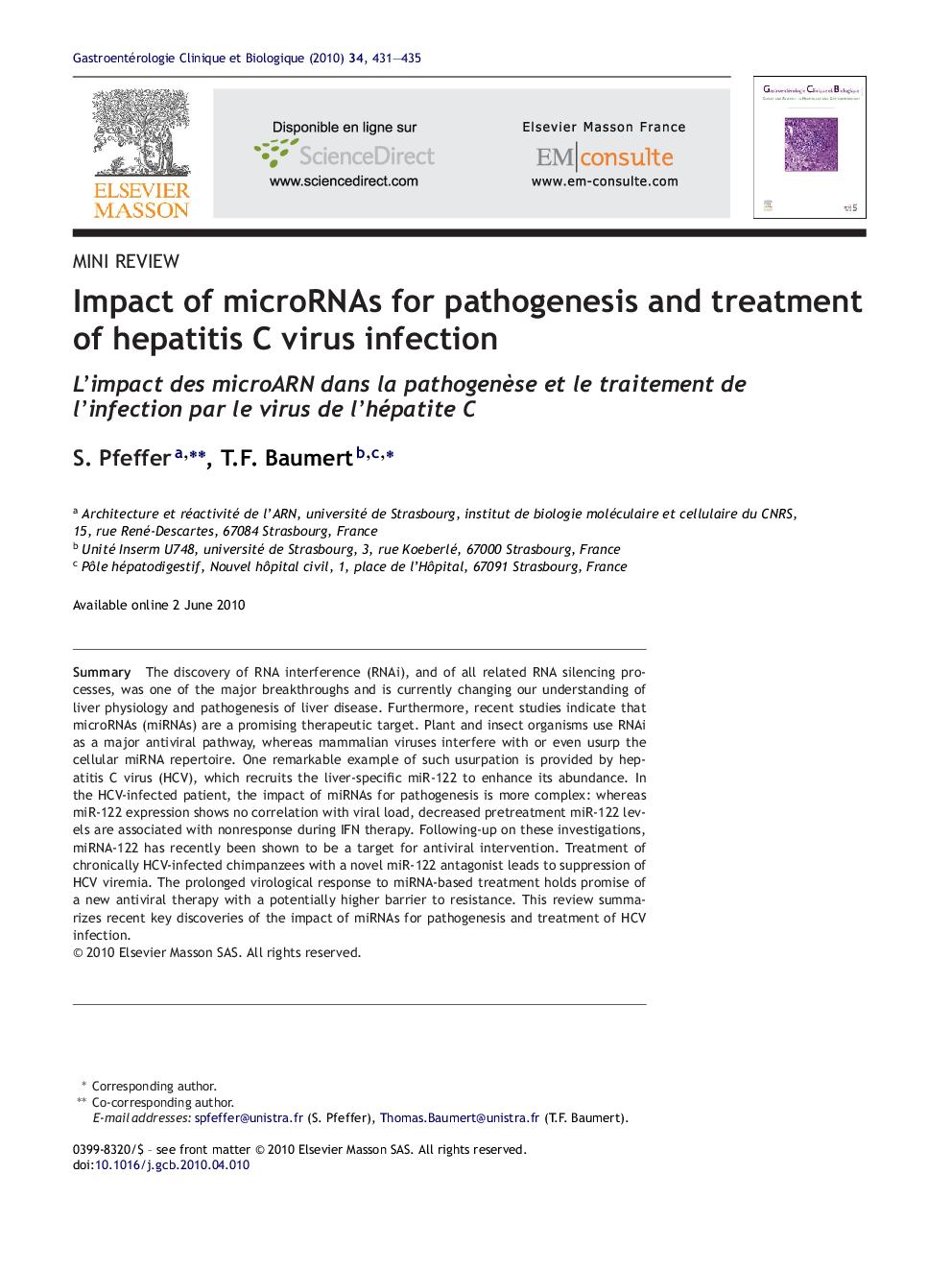| Article ID | Journal | Published Year | Pages | File Type |
|---|---|---|---|---|
| 3290280 | Gastroentérologie Clinique et Biologique | 2010 | 5 Pages |
SummaryThe discovery of RNA interference (RNAi), and of all related RNA silencing processes, was one of the major breakthroughs and is currently changing our understanding of liver physiology and pathogenesis of liver disease. Furthermore, recent studies indicate that microRNAs (miRNAs) are a promising therapeutic target. Plant and insect organisms use RNAi as a major antiviral pathway, whereas mammalian viruses interfere with or even usurp the cellular miRNA repertoire. One remarkable example of such usurpation is provided by hepatitis C virus (HCV), which recruits the liver-specific miR-122 to enhance its abundance. In the HCV-infected patient, the impact of miRNAs for pathogenesis is more complex: whereas miR-122 expression shows no correlation with viral load, decreased pretreatment miR-122 levels are associated with nonresponse during IFN therapy. Following-up on these investigations, miRNA-122 has recently been shown to be a target for antiviral intervention. Treatment of chronically HCV-infected chimpanzees with a novel miR-122 antagonist leads to suppression of HCV viremia. The prolonged virological response to miRNA-based treatment holds promise of a new antiviral therapy with a potentially higher barrier to resistance. This review summarizes recent key discoveries of the impact of miRNAs for pathogenesis and treatment of HCV infection.
